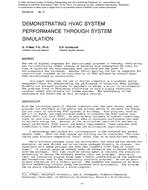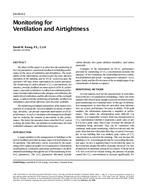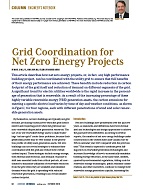Click here to purchase
In recognition of various adverse health effects of ozone and products of ozone-initiated chemistry, ANSI/ASHRAE Standard 62.1-2019 regulates that air-cleaning devices which have a minimum ozone removal efficiency of 40% should be operated where outdoor ozone concentrations are expected to exceed 100 ppb. If air-cleaning devices effective in ozone removal such as activated carbon filters are installed in building heating, ventilation, and air conditioning (HVAC) systems, indoor ozone concentrations can be substantially reduced. However, little is known on the performance of commercially available ozone removal devices under realistic operating conditions in HVAC systems, which poses a challenge to the selection of qualified devices in order to satisfy Standard 62.1. ANSI/ASHRAE Standard 145.2-2016 proposes a standard laboratory test method for 29 gases including ozone to quantify the performance of gas-phase air-cleaning devices. Considering the unique removal mechanism of ozone by activated carbon filters, it remains unclear whether the standard test method can be applied to ozone removal on activated carbon filters and if not how it should be modified. Therefore, the objective of this study is to investigate a laboratory method to test the ozone removal performance of activated carbon filters based on Standard 145.2. Activated carbon filters were tested in a test rig at The University of Texas at Austin which fully supports the test protocol in Standard 145.2. Prolonged alternative test procedures based on Standard 145.2 were used to study the temporal variation of different filter performances. The study also investigated the feasibility of the capacity test with an elevated ozone concentration as instructed by Standard 145.2.
Citation: 2020 Virtual Conference Papers
Product Details
- Published:
- 2020
- Number of Pages:
- 8
- Units of Measure:
- Dual
- File Size:
- 1 file , 2.2 MB
- Product Code(s):
- D-VC-20-C057


